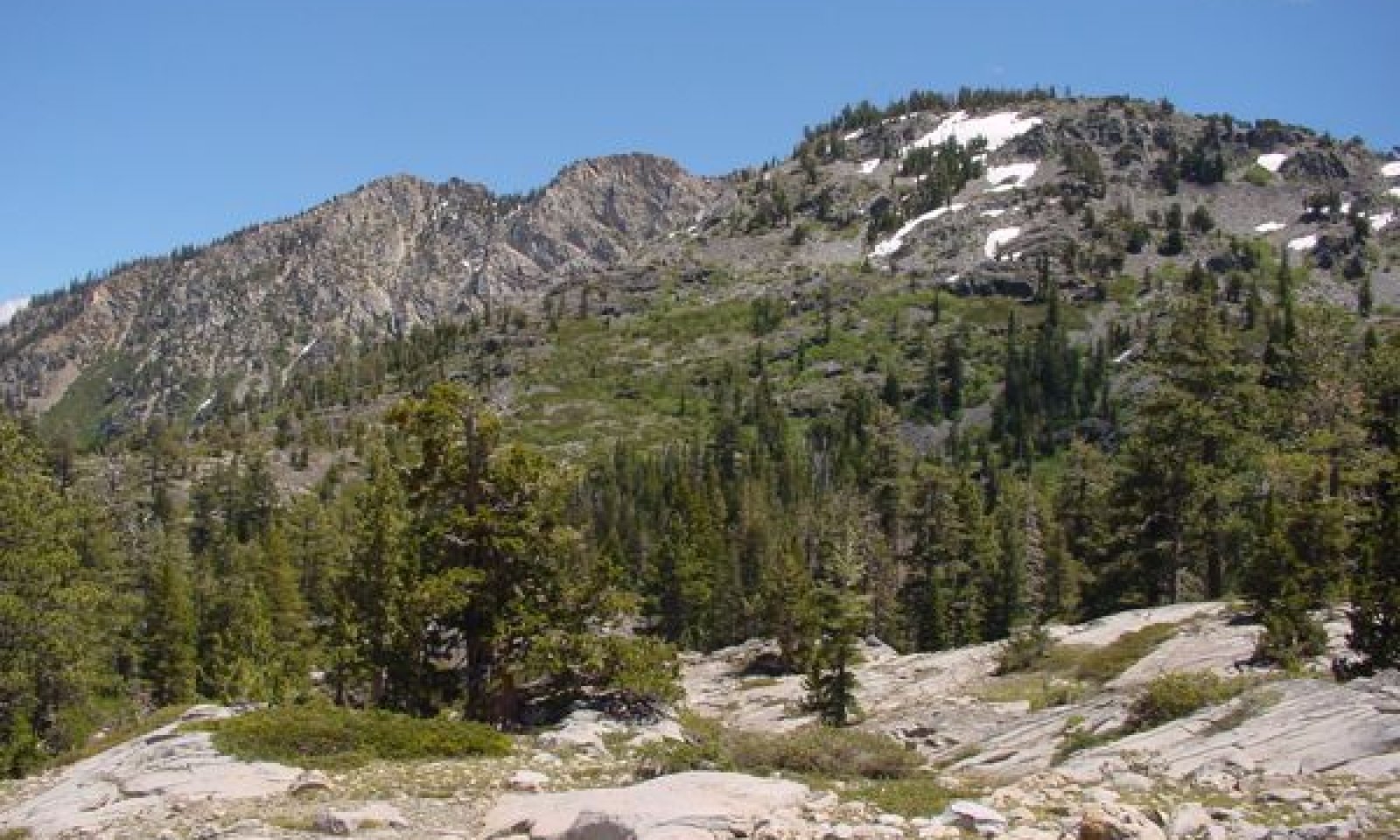

Natural Resources
Conservation Service
Ecological site R022AE202CA
Granitic Pocket
Accessed: 12/22/2025
General information
Approved. An approved ecological site description has undergone quality control and quality assurance review. It contains a working state and transition model, enough information to identify the ecological site, and full documentation for all ecosystem states contained in the state and transition model.

Figure 1. Mapped extent
Areas shown in blue indicate the maximum mapped extent of this ecological site. Other ecological sites likely occur within the highlighted areas. It is also possible for this ecological site to occur outside of highlighted areas if detailed soil survey has not been completed or recently updated.
MLRA notes
Major Land Resource Area (MLRA): 022A–Sierra Nevada and Tehachapi Mountains
MLRA 22A
Major Land Resource Area 22A, Sierra Nevada Mountains, is located predominantly in California and a small section of western Nevada. The area lies completely within the Sierra Nevada Section of the Cascade-Sierra Mountains Province. The Sierra Nevada range has a gentle western slope, and a very abrupt eastern slope. The Sierra Nevada consists of hilly to steep mountains and occasional flatter mountain valleys. Elevation ranges between 1,500 and 9,000 ft throughout most of the range, but peaks often exceed 12,000 ft. The highest point in the continental US occurs in this MLRA (Mount Whitney, 14,494 ft). Most of the Sierra Nevada is dominated by granitic rock of the Mesozoic age, known as the Sierra Nevada Batholith. The northern half is flanked on the west by a metamorphic belt, which consists of highly metamorphosed sedimentary and volcanic rocks. Additionally, glacial activity of the Pleistocene has played a major role in shaping Sierra Nevada features, including cirques, arêtes, and glacial deposits and moraines. Average annual precipitation ranges from 20 to 80 inches in most of the area, with increases along elevational and south-north gradients. Soil temperature regime ranges from mesic, frigid, and cryic. Due to the extreme elevational range found within this MLRA, Land Resource Units (LRUs) were designated to group the MLRA into similar land units.
LRU "E" Northern Sierran Upper Montane: This LRU occurs at the mid elevations of the Sierra Nevada, from the Sonora Pass area to the higher mountains in the vicinity of Quincy. Elevations are typically between 5,500 feet to 8,500 feet, with the lower elevations typically on southern aspects, and the higher elevations on northern aspects. The frost-free season is 60 to 125 days, MAAT ranges from 40 to 50 F, and MAP ranges from 35 to 85 inches. The soil temperature regime is mostly frigid, with some cryic soil temperatures at the upper elevations and northern aspects. Soil moisture regimes are mostly xeric, but may be udic where snow persists through spring.
Classification relationships
Ecological site concept
This ecological site occurs in glaciated basins with a very high proportion of bedrock, typically at elevations of 6,300 to 8,200 feet. Slopes range from 5 to 30 percent. Among the bedrock, small pockets of shallow soil and patches of talus support most of the vegetation for this site. The inherent patchiness of the habitat means that there is an inherently high degree of variability in the reference plant community. A low sedge community dominated by Ross sedge (Carex rossii) and shorthair sedge (Carex exserta) typically occurs in flat or gently sloping soil pockets. A shrub community dominated by huckleberry oak (Quercus vaccinifolia) is concentrated close to bedrock and among talus where roots have freedom to grow deep laterally and deep into the talus. A diverse forb community dominated by mountain pride (Penstemon newberryi) occupies the diverse microsites found throughout the site, such as cracks in bedrock, and there is typically a sparse cover of Sierra juniper (Juniperus grandis), Jeffrey pine (Pinus jeffreyi) and Sierra lodgepole pine (Pinus contorta var. murrayana). The trees are typically found adjacent to the exposed bedrock and occasionally in the cracks of the bedrock where water is readily available.
Associated sites
| F022AC003CA |
Frigid-Cryic Sandy Slopes Occurs on higher elevation slopes with moderately to very deep sandy soils. Red fir (Abies magnifica) and western white pine (Pinus monticola) dominate the forest, with pinemat manzanita (Arctostaphylos nevadensis) dominant in canopy openings. |
|---|---|
| F022AC005CA |
Cryic Sheltered, Moist Sandy Mountain Slopes Occurs on adjacent north-facing slopes with deep sandy soils. A mixed-subalpine forest is present, with Sierra lodgepole pine (Pinus contorta var. murrayana), mountain hemlock (Tsuga mertensiana), red fir (Abies magnifica) and western white pine (Pinus monticola) all present. |
| F022AF004CA |
Frigid, Shallow To Deep, Sandy Mountain Slopes Occurs on adjacent south-facing slopes with sandy soils. Jeffrey pine (Pinus jeffreyi) dominates the open forest, and shrubs may be abundant in the understory. |
| R022AE213CA |
Steep Rubbly Slope Occurs on adjacent steep rubbly slopes and is dominated by a dense huckleberry oak (Quercus vaccinifolia), greenleaf manzanita (Arctostaphylos patula) shrubland. |
Table 1. Dominant plant species
| Tree |
(1) Juniperus grandis |
|---|---|
| Shrub |
(1) Quercus vacciniifolia |
| Herbaceous |
(1) Carex rossii |
Click on box and path labels to scroll to the respective text.

